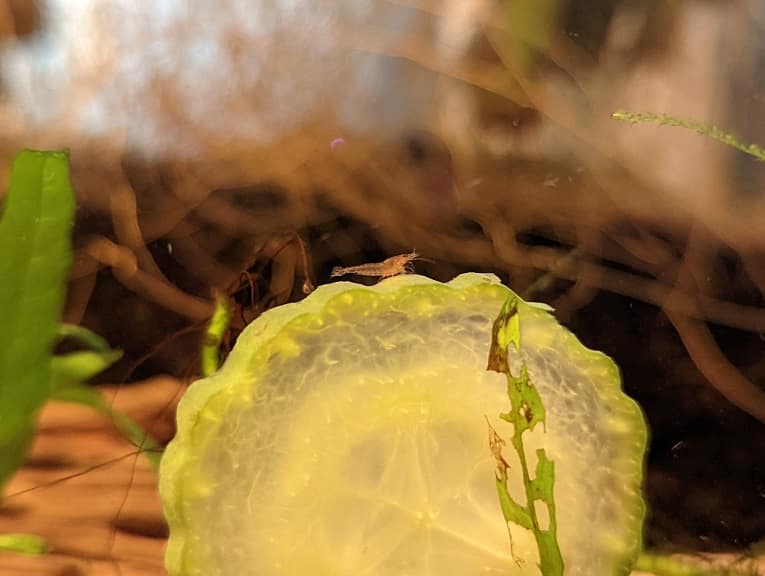Ammonia and nitrites can be extremely toxic for your Cherry Shrimps. Long term exposure to high concentration of nitrates will also cause health issues for these inverts.
To see how you can safely reduce ammonia, nitrites and nitrates without harming your shrimps, you can take a look at this article from Aquarium Blueprints.
What are ammonia, nitrite and nitrate?
Ammonia comes from the decomposed organic wastes in your aquarium. These include uneaten food, dead plants and/or excrement produced by your aquatic pets.
There is a natural bacteria colony that will convert ammonia to nitrites while another set of natural bacteria species will convert nitrites to nitrates.
Depending on how your tank is set up, there is also a bacteria colony that consume nitrate. With that said, this species requires specialized areas in your tank that are devoid of oxygen.
For the most optimal living conditions for your pet inverts, your tank water needs to have 0 ppm of ammonia, 0 ppm of nitrites and less than 20 ppm of nitrates.
How to safely remove ammonia and nitrites in a Cherry Shrimp tank
In order to safely remove ammonia and nitrites from your shrimp tank without causing any harm and/or stress, we recommend that you take the following steps:
1. Since ammonia and nitrites can be very toxic even in small traces, we recommend that you dose Seachem Prime in your tank.
Make sure you follow the instructions in the bottle and add enough to cover the entire tank water volume of your aquarium.
2. Keep dosing every 48 hours since that is how long Prime will remain effective at detoxifying ammonia and nitrites.
3. Eventually, the beneficial bacteria in for shrimp tank should be able to handle the ammonia and nitrites in the water column. At this point, you can stop dosing Prime.
Keep in mind that it may take weeks for your aquarium to be fully cycled to the point where you have 0 ppm of ammonia and 0 ppm of nitrates.
In order to speed this process up significantly, we recommend using a live beneficial bacteria product like Seachem Stability, which you can find on Amazon with this link. (#CommissionsEarned)
How to safely lower nitrates in a Cherry Shrimp tank
Nitrates are tricky to lower in a Cherry Shrimp tank. This is because the quickest way to lower the concentration is by doing a major water change. However, big swings in water parameters can be just as stressful and as deadly to your shrimps as high nitrate levels.
To safely lower nitrates, we recommend that you try doing the following instead:
1. To start off, we recommend adding either Seachem De Nitrate or Seachem Matrix to your tank. These biological filter medias contain chambers that are devoid of oxygen, which makes them the perfect places to grow nitrate-consuming bacteria.
To see what are the main differences between De Nitrate and Matrix, you can take a look at this detailed comparison.
2. It could take many weeks for the beneficial bacteria colonies that will eat nitrates to grow on the Seachem De Nitrate or Seachem Matrix media.
In order to speed up this process as soon as possible, we once again recommend using Seachem Stability.
3. Furthermore, you may also want to consider adding live plants in your shrimp tank as these will also help consume nitrates from the water column.
4. Smaller water changes will also help with safely reducing the nitrate levels for your aquarium without harming your fish.
In order to minimize the stress of your Cherry Shrimps, you should change no more than 20% of the tank water volume per week. When adding water back in, we also recommend using the drip-feed method so that your pet inverts will slowly acclimate to the changing water parameters.
5. When trying to lower nitrates, you can also try feeding your Cherry Shrimps less.

Moreover, we recommend that you remove any uneaten food particles after several hours have passed since feeding them. Otherwise, the food will decompose in your aquarium, causing your ammonia, nitrites and nitrate levels to rise.
